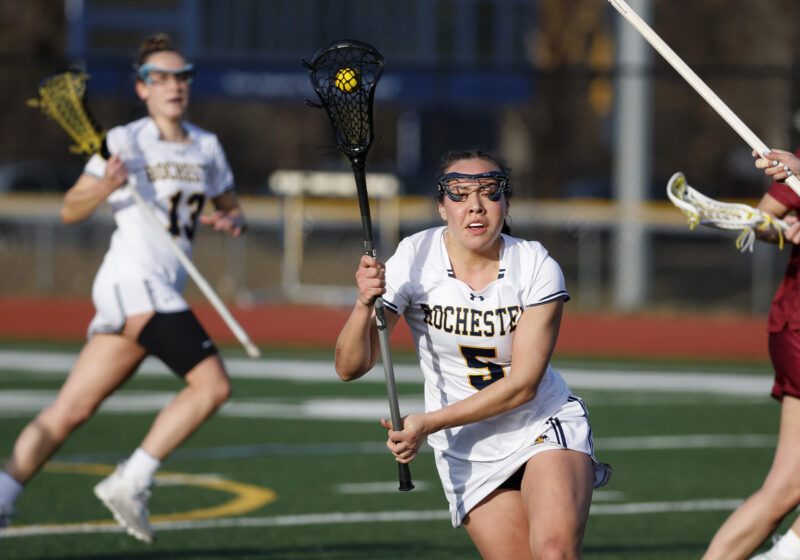Someone once said, “To describe the agony of a marathon to someone who has never run is like trying to explain color to someone who was born blind.”
These were not exactly the comforting words I needed to hear when I was assigned the daunting task of writing about the Rochester Marathon. I myself am a casual jogger, so I figured I could use my experience in some way. Of course, I only run about two miles at most and I walk whenever I get very tired. This is apparently frowned upon during running races. My father, an avid casual runner, ran a marathon about 30 years ago and said the only thing he really remembers was having to walk up the stairs backwards because his muscles were so sore. As encouraging as that memory was, I felt that I might be able to get more inspirational stories from some of the students and teachers who participated in this marathon.
To begin with, this year marked the return of the Rochester Marathon from a long 17-year break. About 1,700 runners participated in the four different races that took place, which provided runners and walkers with a path that went from alongside the Erie Canal to straight down the middle of Park Avenue. The race was established to benefit the Arthritis Foundation and was supported by such elite sponsors as Preferred Care, Saturn and The DiMarco Group, as well as many others. Runners could choose to participate in the full 26.2-mile death-is-the-only-option marathon, a 13-mile half-marathon, a four-person relay – for people who like to suffer in groups – or the 2.62-mile walk – for people who just like to wear athletic clothing.
UR was extremely well represented this year by many students and faculty members. I was lucky enough to interview Spanish professor Beth Jorgensen and junior Ryan O’Dell who both participated in the full-length marathon. O’Dell, a high school cross-country and track athlete, decided to focus more on his academics when he came to UR. By the spring of his sophomore year, he began to get the running itch again and started training for triathlons – which sounds like something out of “The Odyssey” to me – to compete in over this last summer. O’Dell participated in six triathlons, one decathlon and a few road races, including the Ithaca Boilermaker.
While looking for races he could enter in the Rochester area, O’Dell came upon the Rochester Marathon. He then started doing long-distance training running about eight to 10 miles, three times a week for five weeks.
The Rochester Marathon was O’Dell’s first marathon, and so he approached it realistically knowing that he had only trained for a month and a half compared to many of his fellow runners who trained for several months. He started out with a fine speed of 7.5 minutes per mile pace and kept this speed until mile No. 20.
“I got to mile 20 with a time of two hours and 45 minutes and ‘hit the wall,'” O’Dell said.
For those of you who are not familiar with running vernacular, “hit the wall” refers to the period in which a runner who has been running a long race feels as if they have suddenly hit a wall and really want to just die and stop running.
This devastation usually occurs after mile No. 20. “From mile 21 to 25 it was a struggle to keep my feet moving, but I didn’t stop,” O’Dell said. “The first 20 miles went rather fast, probably from all the adrenaline, and I finished with a time of 3:30.”
Ryan was pleased that he accomplished his goal of completing the race under three hours and 45 minutes. He found the rain that day to be a blessing, since he was able to run without water until mile No. 19.
He placed 10th out of 28 in his age group of 19 to 24-year-old males and overall he finished 107th out of the 724 full-length marathon runners.
“It was an excellent race, and it feels great to know that you not only completed a marathon, but that you actually had the strength to attempt it in the first place,” he said.
Well, if you didn’t feel lazy from reading Ryan’s story, imagine trying to balance a full-time college teaching job while training for a marathon.
Professor Beth Jorgensen has always been an athletic person, but it was about 10 years ago that she started running three to five miles a day. Eventually, she began to increase her distance and within a few months she felt confident enough to enter a 10-mile race.
Ten miles must seem like nothing to Jorgensen now, who marked the Rochester marathon as her fourth.
“I run to stay in shape and to push myself physically, and also because I enjoy being out there by myself in all kinds of weather in the quiet, early morning hours,” Jorgensen said.
Jorgensen has sacrificed those precious early morning hours to pursue her running. She found that the Rochester Marathon was very well organized and provided a route with a great variety of scenic Rochester.
She also speaks of “hitting the wall” but, in a story of true devotion, her husband ran the last 10 miles with her. Jorgensen finished with a time of four hours and 13 minutes and came in first out of her age group. “It was a great feeling to cross the finish line and stop running,” she ended.
A marathon is one of the greatest challenges a body and a mind can experience. As Steve Prefontaine, another great runner said, “A lot of people run a race to see who’s the fastest. I run to see who has the most guts.”
Lepore can be reached at mlepore@campustimes.org.

